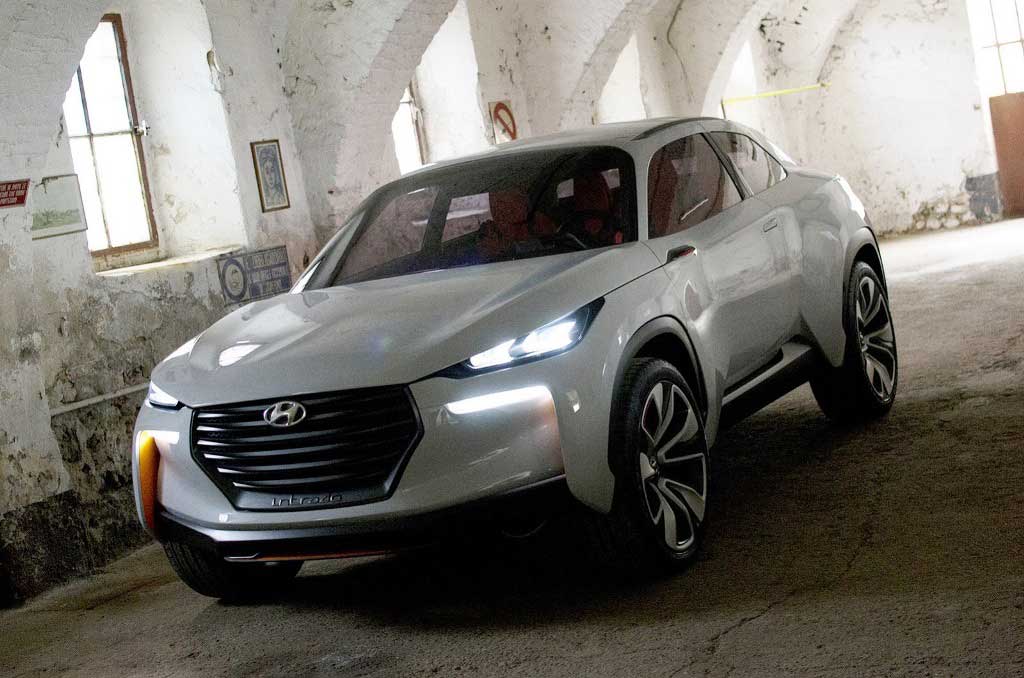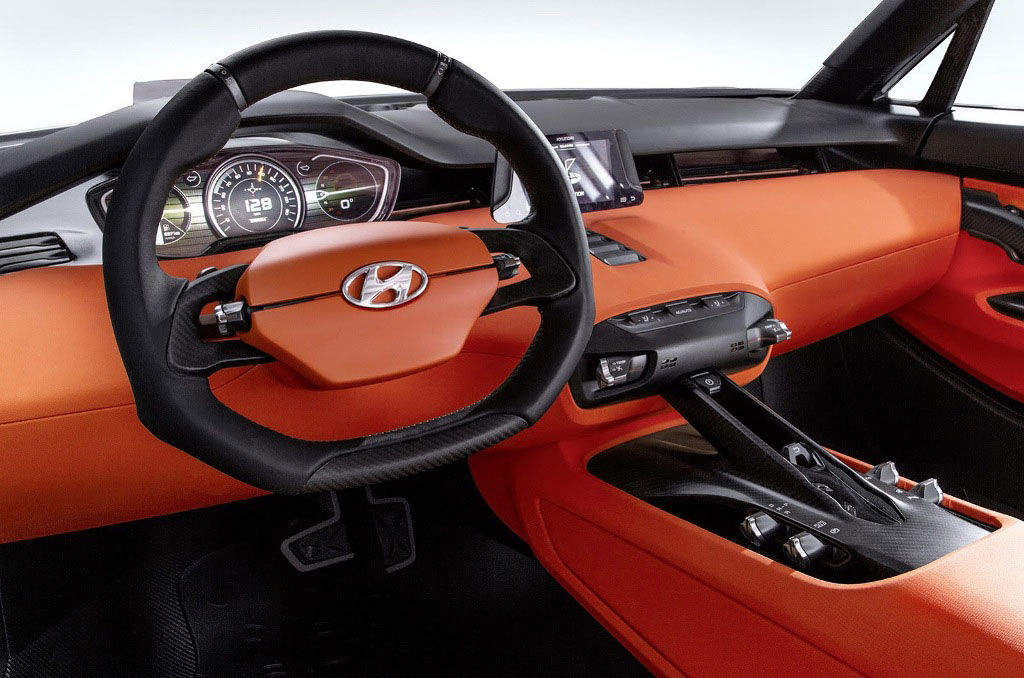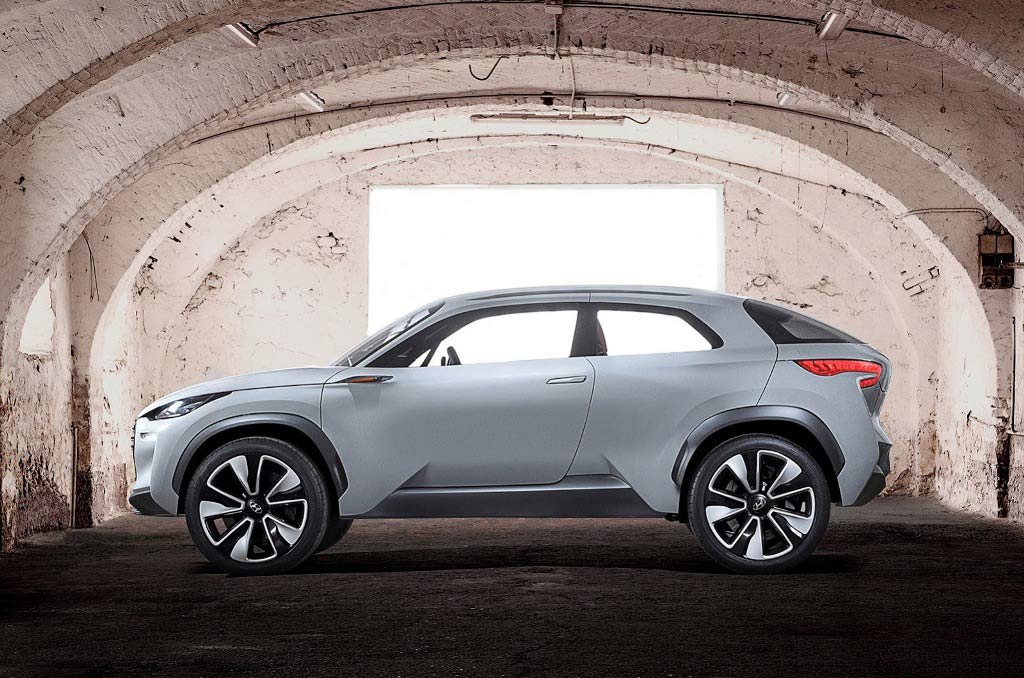With the Geneva Motor Show commencing next week, manufacturers are gathering up everything in their arsenal to put their best foot forward at the coveted event. Hyundai too have revealed the Intrado SUV Concept that will be unveiled at the motor show. Codenamed HED-9, the Hyundai Intrado SUV Concept is based on the company’s Fluidic Sculpture version 2.0 design language and uses fuel cells for propulsion.
On the outset, the 3-door Hyundai Intrado SUV concept looks mature. It is not flashy with the flowing lines as seen on the older Hyundai’s. The lines retain the flow, but have been restricted giving the car an understated demeanour. The front headlights are sharp and gel with the pronounced wheel arches at the sides. The rear on the other hand has a bulge for a muscular feel. The SUV has an imposing stance and we hope to see the overall attitude of the concept reflect on the production version as well. The concept has been completely designed at the Hyundai R&D centre at Rüsselsheim, Germany.
On the interior front, Hyundai has opted for a minimalistic design approach. The dashboard layout is simple and pleasing and features modern day wizardry wrapped in a premium look. The concept gets a digital instrument console and a 2-spoke steering wheel that lends a sporty look to the interior. The centre console on the other hand uses carbon-fibre and houses the controls and switches. The concept also gets a monitor display screen on the top, which has the majority of controls on the car. The interior has been done up in orange and carbon fibre colour scheme and adds a premium and sporty feel to the two-door, four-seater SUV.
The Hyundai Intrado SUV concept uses an evolved form of Hyundai’s Hydrogen fuel cell powertrain and is more compact and lighter than the one showcased in the ix35 Fuel Cell. The Intrado SUV is powered by a 36 KW (48 BHP) lithium-ion battery, while hydrogen is stored in high pressure tanks located behind the rear seats (it emits water). The range is 600 kms and refuelling hydrogen in the tank takes a few minutes. The company has used Carbon Fibre Reinforced Polymer (CFRP) on the concept, which enables the vehicle to be lighter by 70 percent and still have twice the torsional rigidity compared to a traditional steel-bodied vehicle.
Considering the technology that is involved, the vehicle is a good decade away from being possible to use for the masses with the needed infrastructure absent globally. However, the Hyundai Intrado SUV concept does give you a glimpse into the future of urban mobility. With companies taking efforts to develop new materials and technologies that find mass application on cars, the technology on the Intrado will certainly make way to our streets in the future.







